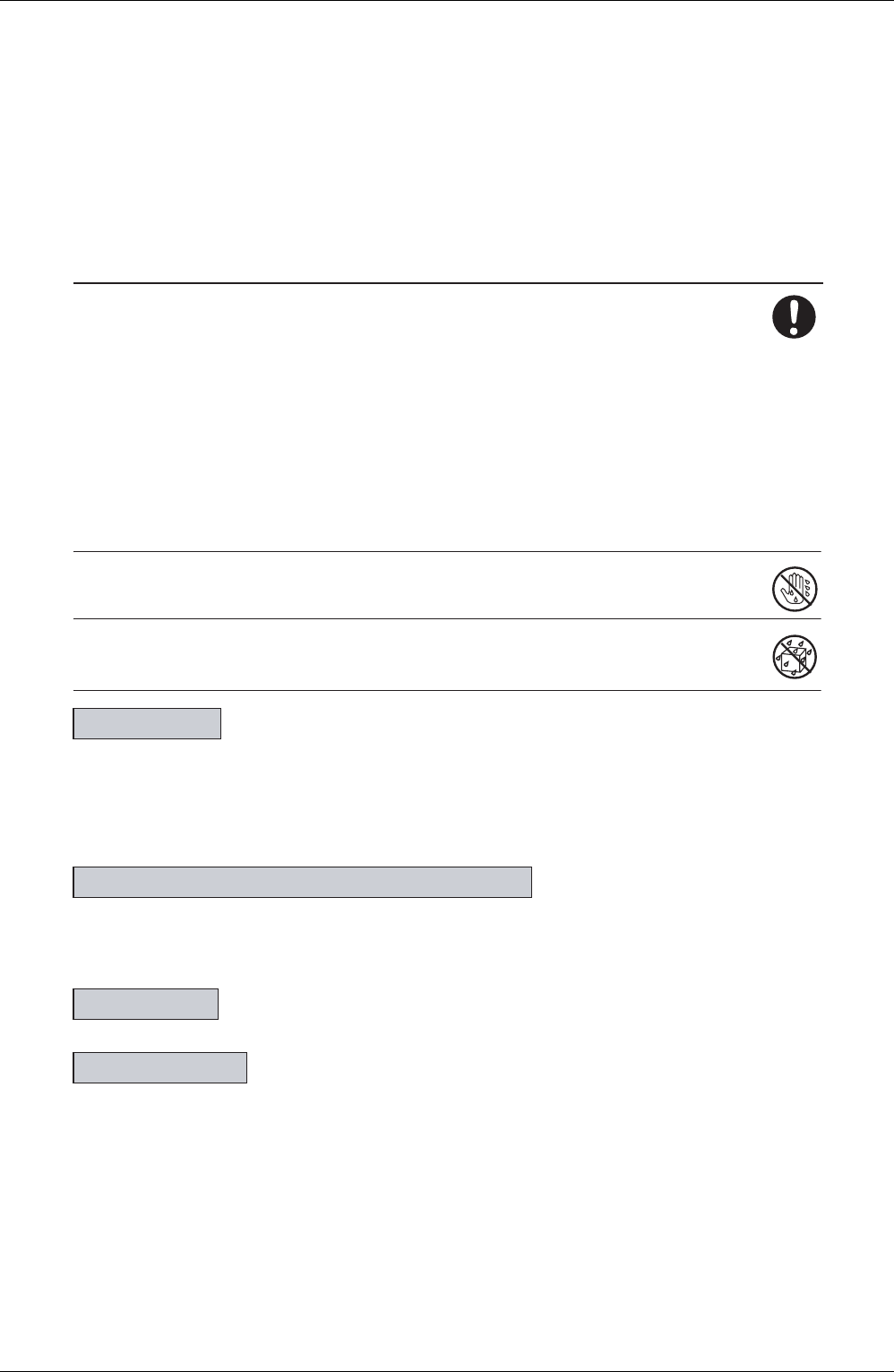Specifications
Table Of Contents
- Cover
- Table of Contents
- Part 1 List of Functions
- Part 2 Specifications
- Part 3 Printed Circuit Board Connector Wiring Diagram
- Part 4 Function and Control
- Part 5 Operation Manual
- Part 6 Service Diagnosis
- 1. Caution for Diagnosis
- 2. Problem Symptoms and Measures
- 3. Service Check Function
- 4. Code Indication on the Remote Controller
- 5. Troubleshooting
- 5.1 Indoor Units
- 5.2 Outdoor Units
- 5.3 Indoor Unit PCB Abnormality A1
- 5.4 Freeze-up Protection Control or High Pressure Control A5
- 5.5 Fan Motor or Related Abnormality A6
- 5.6 Thermistor or Related Abnormality (Indoor Unit) C4,C9
- 5.7 Front Panel Open / Close Fault C7
- 5.8 Signal Transmission Error (between Indoor and OutdoorUnit) U4
- 5.9 Unspecified Voltage (between Indoor and Outdoor Units) UA
- 5.10 Freeze-up Protection Control A5
- 5.11 Outdoor Unit PCB Abnormality E1
- 5.12 OL Activation (Compressor Overload) E5
- 5.13 Compressor Lock E6
- 5.14 DC Fan Lock E7
- 5.15 Input Over Current Detection E8
- 5.16 Discharge Pipe Temperature Control F3
- 5.17 High Pressure Control in Cooling F6
- 5.18 Compressor Sensor System Abnormality H0
- 5.19 Position Sensor Abnormality H6
- 5.20 CT or Related Abnormality H8
- 5.21 Thermistor or Related Abnormality (Outdoor Unit) P4,J3,J6,J8,J9,H9
- 5.22 Electrical Box Temperature Rise L3
- 5.23 Radiation Fin Temperature Rise L4
- 5.24 Output Over Current Detection L5
- 5.25 Insufficient Gas U0
- 5.26 Low-voltage Detection or Over-voltage Detection U2
- 5.27 Signal Transmission Error (on Outdoor Unit PCB) U7
- 5.28 Anti-icing Function in Other Rooms / UnspecifiedVoltage (between Indoor and Outdoor Units) UA,UH
- 6. Check
- Part 7 Removal Procedure
- Part 8 Others
- Part 9 Appendix
- Index
- Drawings & Flow Charts

SiBE12-713 Instruction
Operation Manual 107
•
Do not stand or sit on the outdoor unit. Do not place any object on the unit to avoid injury, do not remove the fan guard.
•
Do not place anything under the indoor or outdoor unit that must be kept away from moisture. In certain conditions,
moisture in the air may condense and drip.
•
After a long use, check the unit stand and fittings for damage.
•
Do not touch the air inlet and aluminum fins of outdoor unit. It may cause injury.
•
The appliance is not intended for use by young children or infirm persons without supervision.
•
Young children should be supervised to ensure that they do not play with the appliance.
•
To avoid oxygen deficiency, ventilate the room sufficiently if equipment with burner is used together with the
air conditioner.
•
Before cleaning, be sure to stop the operation, turn the breaker off or pull out the supply cord.
•
Do not connect the air conditioner to a power supply different from the one as specified. It may cause trou-
ble or fire.
•
Depending on the environment, an earth leakage breaker must be installed. Lack of an earth leakage breaker may
result in electric shocks.
•
Arrange the drain hose to ensure smooth drainage. Incomplete draining may cause wetting of the building, furniture
etc.
•
Do not place objects in direct proximity of the outdoor unit and do not let leaves and other debris accumulate around
the unit.
Leaves are a hotbed for small animals which can enter the unit. Once in the unit, such animals can cause malfunc-
tions, smoke or fire when making contact with electrical parts.
•
Do not operate the air conditioner with wet hands.
•
Do not wash the indoor unit with excessive water, only use a slightly wet cloth.
•
Do not place things such as vessels containing water or anything else on top of the unit. Water may pene-
trate into the unit and degrade electrical insulations, resulting in an electric shock.
■
To install the air conditioner in the following types of environments, consult the dealer.
•
Places with an oily ambient or where steam or soot occurs.
•
Salty environment such as coastal areas.
•
Places where sulfide gas occurs such as hot springs.
•
Places where snow may block the outdoor unit.
The drain from the outdoor unit must be discharged to a place of good drainage.
■ For installation, choose a place as described below.
•
A place solid enough to bear the weight of the unit which does not amplify the operation noise or vibration.
• A place from where the air discharged from the outdoor unit or the operation noise will not annoy
your neighbours
.
•
For power supply, be sure to use a separate power circuit dedicated to the air conditioner.
•
Relocating the air conditioner requires specialized knowledge and skills. Please consult the dealer if reloca-
tion is necessary for moving or remodeling.
Installation site
Consider nuisance to your neighbours from noises
Electrical work
System relocation










